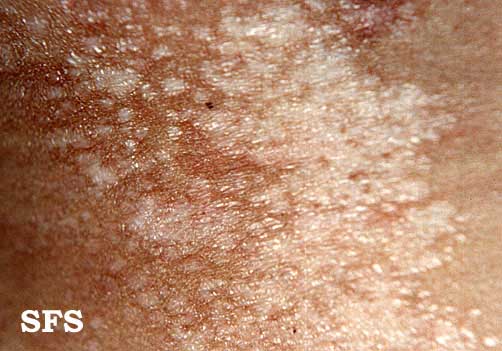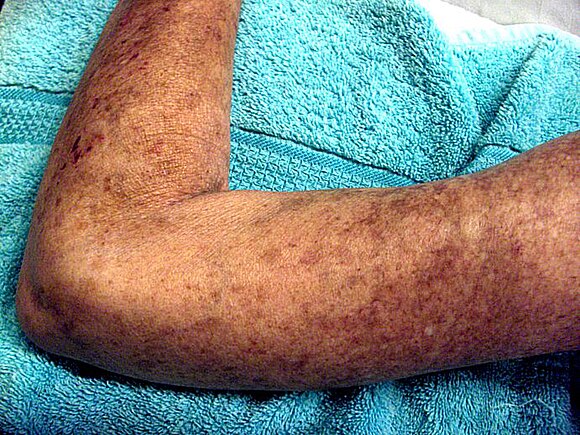Lichen sclerosus, often abbreviated as LS, is a chronic inflammatory skin condition that primarily affects the genital and anal areas but can also occur on other parts of the body. This disorder is characterized by thin, white, shiny patches on the skin, which may cause itching, discomfort, and even pain. While it can affect individuals of all ages and genders, it is most commonly observed in postmenopausal women. Understanding this condition is crucial for early diagnosis, effective management, and improved quality of life for those affected.

What is Lichen Sclerosus?
Lichen sclerosus is a long-term skin condition that leads to inflammation and changes in the texture and appearance of the skin. The exact cause of this disorder remains unknown, but researchers believe it may be linked to an overactive immune system, hormonal imbalances, or genetic predispositions. It is not contagious, meaning it cannot be transmitted from person to person through contact.
The hallmark symptoms of this condition include the development of smooth, white patches on the skin, which may feel fragile and prone to tearing. These patches often appear in areas where the skin is thinner, such as the genital and anal regions. However, they can also develop on other parts of the body, including the upper arms, breasts, and torso.
Common Symptoms
- Itching: One of the most common and bothersome symptoms is intense itching, which can disrupt daily activities and sleep.
- Pain: Affected areas may become sore or painful, especially during physical activities or sexual intercourse.
- Blotchy Skin: The skin may develop white, shiny, or wrinkled patches that can sometimes crack or bleed.
- Scarring: Over time, the condition may lead to scarring, which can cause structural changes in the affected areas.
Risk Factors and Who is Affected
While anyone can develop this skin disorder, certain groups are at a higher risk. Postmenopausal women are disproportionately affected, suggesting a possible link to hormonal changes. Children can also develop the condition, although it is less common. Other potential risk factors include:
- A family history of autoimmune diseases
- Existing autoimmune conditions, such as thyroid disorders or vitiligo
- Previous skin trauma or irritation in the affected areas
It is important to note that while the condition is more prevalent in specific demographics, it does not discriminate based on age, gender, or ethnicity. Early recognition of symptoms is essential for timely intervention.
Diagnosis of Lichen Sclerosus
Diagnosing this skin disorder can be challenging because its symptoms often mimic those of other skin conditions, such as eczema, psoriasis, or fungal infections. A healthcare provider will typically begin with a thorough physical examination and a review of the patient’s medical history. In some cases, additional tests may be necessary to confirm the diagnosis.
Physical Examination
During the physical examination, the healthcare provider will look for characteristic signs, such as white, shiny patches, thinning skin, or scarring. They may also inquire about any associated symptoms, such as itching or pain.
Biopsy
In cases where the diagnosis is uncertain, a biopsy may be performed. This involves removing a small sample of the affected skin for laboratory analysis. A biopsy can help rule out other conditions and provide definitive confirmation of the disorder.
Treatment Options
While there is no cure for this chronic skin condition, various treatments can help manage symptoms and prevent complications. The primary goal of treatment is to reduce inflammation, alleviate discomfort, and minimize the risk of scarring.
Topical Corticosteroids
Topical corticosteroids are the first line of treatment for this condition. These medications help reduce inflammation and itching. They are usually applied directly to the affected areas and must be used under the guidance of a healthcare provider to avoid potential side effects, such as skin thinning.
Emollients and Moisturizers
Keeping the skin well-moisturized is essential for managing symptoms. Emollients and moisturizers can help soothe dryness and prevent the skin from cracking. Non-irritating products specifically designed for sensitive skin are recommended.
Immunomodulators
In cases where topical corticosteroids are not effective or suitable, immunomodulators may be prescribed. These medications work by modulating the immune response to reduce inflammation. Examples include tacrolimus and pimecrolimus.
Lifestyle Modifications
Making certain lifestyle changes can also help manage symptoms. These include:
- Wearing loose-fitting, breathable clothing to reduce irritation
- Avoiding harsh soaps and detergents that can exacerbate symptoms
- Practicing good hygiene to prevent secondary infections
Potential Complications
If left untreated, this skin disorder can lead to several complications. These include:
Scarring and Structural Changes
Over time, the affected skin may become scarred, leading to structural changes. In the genital area, this can result in narrowing of the vaginal opening or fusion of the labia, which may require surgical intervention.
Infections
The thin, fragile skin associated with this condition is more susceptible to tears and breaks, increasing the risk of infections. Prompt treatment of any open wounds or sores is essential to prevent complications.
Cancer Risk
Although rare, individuals with this skin disorder have a slightly increased risk of developing skin cancer in the affected areas. Regular monitoring and follow-up with a healthcare provider are crucial for early detection and treatment.
Living with Lichen Sclerosus
Managing a chronic skin condition like this can be emotionally and physically challenging. However, with the right support and treatment plan, individuals can lead fulfilling lives. Here are some tips for coping with the condition:
Seek Professional Support
Working closely with a dermatologist or healthcare provider is essential for effective management. They can offer personalized advice and adjust treatment plans as needed.
Join Support Groups
Connecting with others who have the same condition can provide emotional support and practical advice. Online forums and local support groups can be valuable resources.
Educate Yourself
Understanding the condition and its treatment options empowers individuals to take an active role in their care. Reliable sources of information include medical websites, books, and educational materials provided by healthcare professionals.
Research and Future Directions
Ongoing research is being conducted to better understand the underlying causes of this skin disorder and to develop more effective treatments. Scientists are exploring the role of genetics, immune system dysfunction, and hormonal factors in the development of the condition. Advances in targeted therapies and personalized medicine hold promise for improving outcomes for affected individuals.
Emerging Treatments
Newer treatments, such as phototherapy and biologic agents, are being investigated for their potential benefits. Phototherapy involves exposing the affected skin to specific wavelengths of light to reduce inflammation, while biologic agents target specific components of the immune system.
Preventive Measures
While there is currently no way to prevent this condition, understanding risk factors and early warning signs can facilitate prompt diagnosis and treatment. Researchers are also studying whether certain interventions, such as dietary changes or supplements, may help reduce the risk of developing the disorder.





